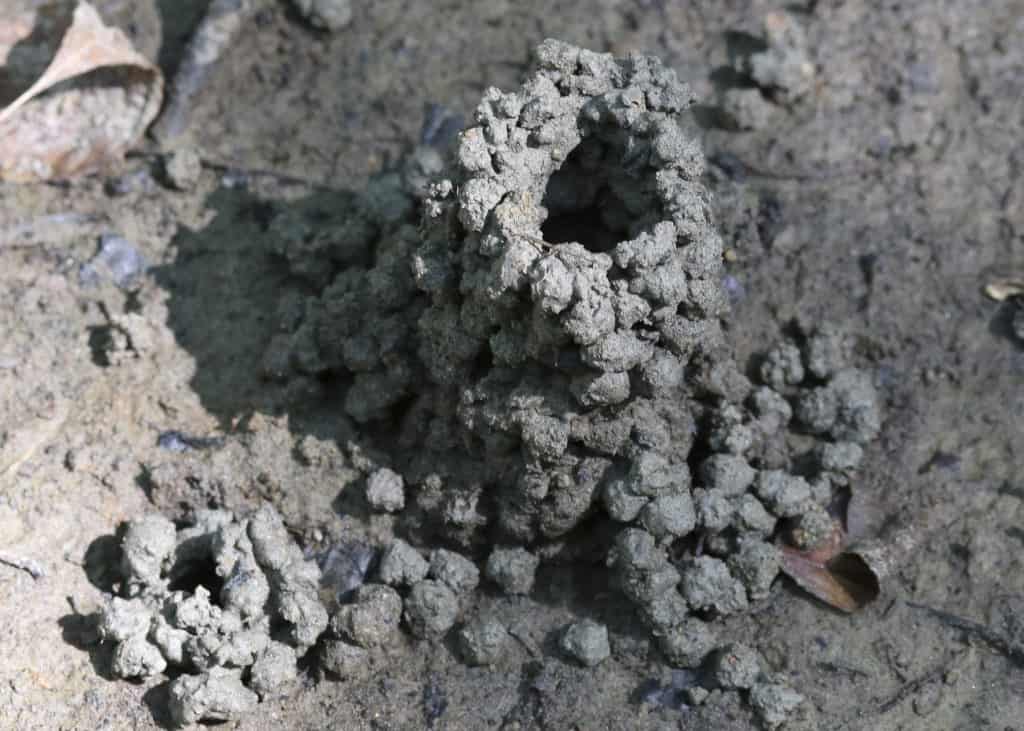Creature Feature

Crustaceans on Land: The Chimney Crayfish
By Wayne Bierbaum
Last week, I walked the trails at the Smithsonian Environmental Research Center in Edgewater hoping to find large numbers of migrating warblers but there were only a few. The walk was about three and a half miles and went by the old Java Farm and then out across a boardwalk to Hog Island. The trail crossed several marshy areas and a small stream. All the tributaries to the stream were dried up. In one of the streambeds were several well-constructed tubes made of mud. I have seen similar such construction and knew it was the home of a chimney crayfish.
The chimney crayfish is an unusual crustacean that lives much of its life underground. They have gills to breathe and require moisture for them to exchange oxygen out of water. They build single-occupant chambers underground that extend to the water level for moisture and the excavated material creates the chimney or multiple chimneys. The chimney allows for protection and fresh air. If the chamber’s water or air gets stagnant then the crayfish will suffocate. Since their chambers reach water and are at most 3 feet deep, they show the presence of water; standing or seeping.
The crayfish are omnivores, eating anything, plant or animal they can find. They spend most of their time underground eating the bugs and plant material they find there, but on humid or rainy nights, they will search for food outside of their chambers.
I have been near a marsh in Poolesville around sunrise and found dozens of crayfish walking and hunting in a field out of water. Since they would be food for lots of animals, raccoons to owls, coming out to forage is when they are the most vulnerable.
The chimney crayfish can live for about four years. They reach sexual maturity quickly, in about three months after birth. Their nighttime foraging also doubles for finding a mate.
Loyola University describes their reproduction: “Where do crawfish lay their eggs? They lay their eggs in their burrow and hold them attached to little appendages under the tail called swimmerets, or pleopods. As long as oxygen levels in the burrow water are high, the adult keeps the eggs under water. As the oxygen drops, the adult keeps the eggs moist but gets them out of the water, thus allowing them to absorb oxygen from the air. The eggs usually hatch in the burrows and begin to grow. Since there is a restricted amount of food available in the burrow, the youngsters consume infertile eggs and the carcasses of deceased siblings. Indeed, they will kill one another in order to survive. Once the rains begin and pools reform on the surface, all the crawfish move out of the burrow and into the surface environment. The babies usually stay with mom for a short period, but eventually get on with life and disperse throughout the realm.”
Chimney crayfish are the most widespread crayfish in the U.S. When a boggy piece of land is converted into a lawn, chimneys may start to pop up, making mowing a challenge. Mowing over a chimney will not hurt the animal below and they will likely quickly rebuild.
When you see one of their chimneys, think of the unusual animal that made it—a land crustacean.
